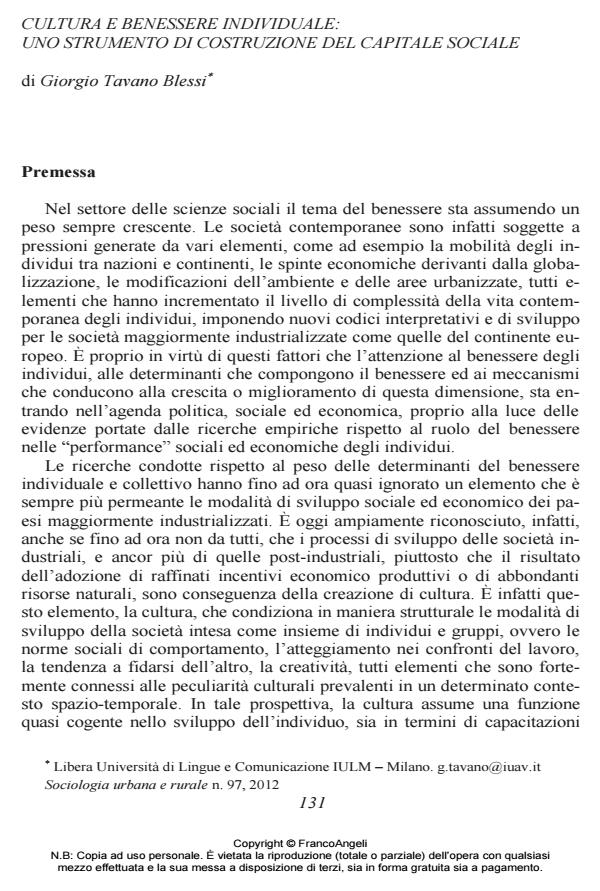Culture and Individual Well Being: a tool for the improvement of Social Capital
Journal title SOCIOLOGIA URBANA E RURALE
Author/s Blessi Giorgio Tavano
Publishing Year 2012 Issue 2012/97 Language Italian
Pages 18 P. 131-148 File size 199 KB
DOI 10.3280/SUR2012-097010
DOI is like a bar code for intellectual property: to have more infomation
click here
Below, you can see the article first page
If you want to buy this article in PDF format, you can do it, following the instructions to buy download credits

FrancoAngeli is member of Publishers International Linking Association, Inc (PILA), a not-for-profit association which run the CrossRef service enabling links to and from online scholarly content.
In this paper we focus on the role of cultural participation as a source of individual subjective well being given the ‘sociability grade’ of different cultural activities and social outcomes, such as relational goods, derived from cultural participation. We testify our hypothesis that cultural participation is favorable associated to the level of subjective well being, and this will be relevant in people consuming cultural activities in which participants, thanks to the cultural trait, are expected to have non-instrumental personal interaction, but the opportunity to establish genuine forms of relations. This theoretical hypothesis is tested through the results of a survey undertook on Italian population, focused on the relation between culture and well being, and thanks to a online survey, employed in order to rank the ‘relationability grade’ of 15 cultural related activities. Our findings shows that culture should act toward a the establishment of relational goods and in this perspective can be seen as a tool to enhance at best subjective wellbeing and increase social capital level.
Keywords: Culture; cultural participation; relationship; relational goods; well being; social capital.
Blessi Giorgio Tavano, Cultura e benessere individuale: uno strumento di costruzione del capitale sociale in "SOCIOLOGIA URBANA E RURALE" 97/2012, pp 131-148, DOI: 10.3280/SUR2012-097010